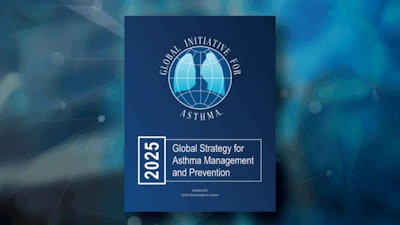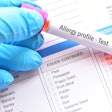
The Global Initiative for Asthma (GINA) has released a 2025 update to its guidelines, Global Strategy for Asthma Management and Prevention. The updated guidelines introduce significant changes that reflect the latest research and clinical insights into asthma care. A comprehensive summary of the updates is also reflected in the GINA 2025 Slide Sets.
Key highlights of the 2025 update include:
- Expanded role of type 2 biomarkers
The new guidelines emphasize the use of type 2 inflammation biomarkers — particularly blood eosinophil count (BEC) and fractional exhaled nitric oxide (FeNO) — to guide diagnosis and treatment. The report provides detailed thresholds for interpreting these markers and stresses the importance of repeated testing due to variability. - Improved guidance for young children
For children under the age of six, the update offers pragmatic diagnostic criteria and a stepwise treatment approach. GINA recommends low-dose inhaled corticosteroids (ICS) as the foundation of long-term therapy, with short-acting beta2 agonists (SABA) for symptom relief. The guidelines also include emergency management protocols for exacerbations in this age group. - Revised tools and charts
Several clinical tools have been updated, including:- A new decision tree for severe asthma, now available as a stand-alone guide.
- A reorganized asthma action plan medication table.
- Updated inhaler choice and treatment track diagrams, with added emphasis on environmental impact and medication access.
- Concentration on climate and environmental risks
For the first time, GINA includes a section on the effects of extreme weather and climate change on asthma. It highlights how events like wildfires and temperature extremes can worsen symptoms and disrupt care, urging mitigation strategies such as mask use and sheltering in climate-controlled environments. - Shared decision-making and personalized care
The updated guide reinforces the importance of shared decision-making, encouraging clinicians to consider patient-specific factors such as phenotype, environmental exposures and treatment preferences when selecting therapies. - Updated recommendations for adults and adolescents
GINA refined the diagnostic flowchart for older patients and adjusted treatment tracks to minimize unnecessary exposure to high-dose ICS. The update also discourages the use of certain bronchodilators, including fenoterol, due to safety concerns.
A collaborative, evidence-based approach
The 2025 report is the result of rigorous review by the GINA Science Committee, which evaluated 78 studies to inform its recommendations. The guidelines are designed for use by primary care providers, specialists and allied health professionals worldwide. Implementation should be a multidisciplinary effort involving many stakeholders who seek cost-effective strategies to translate these updates into practice.






















